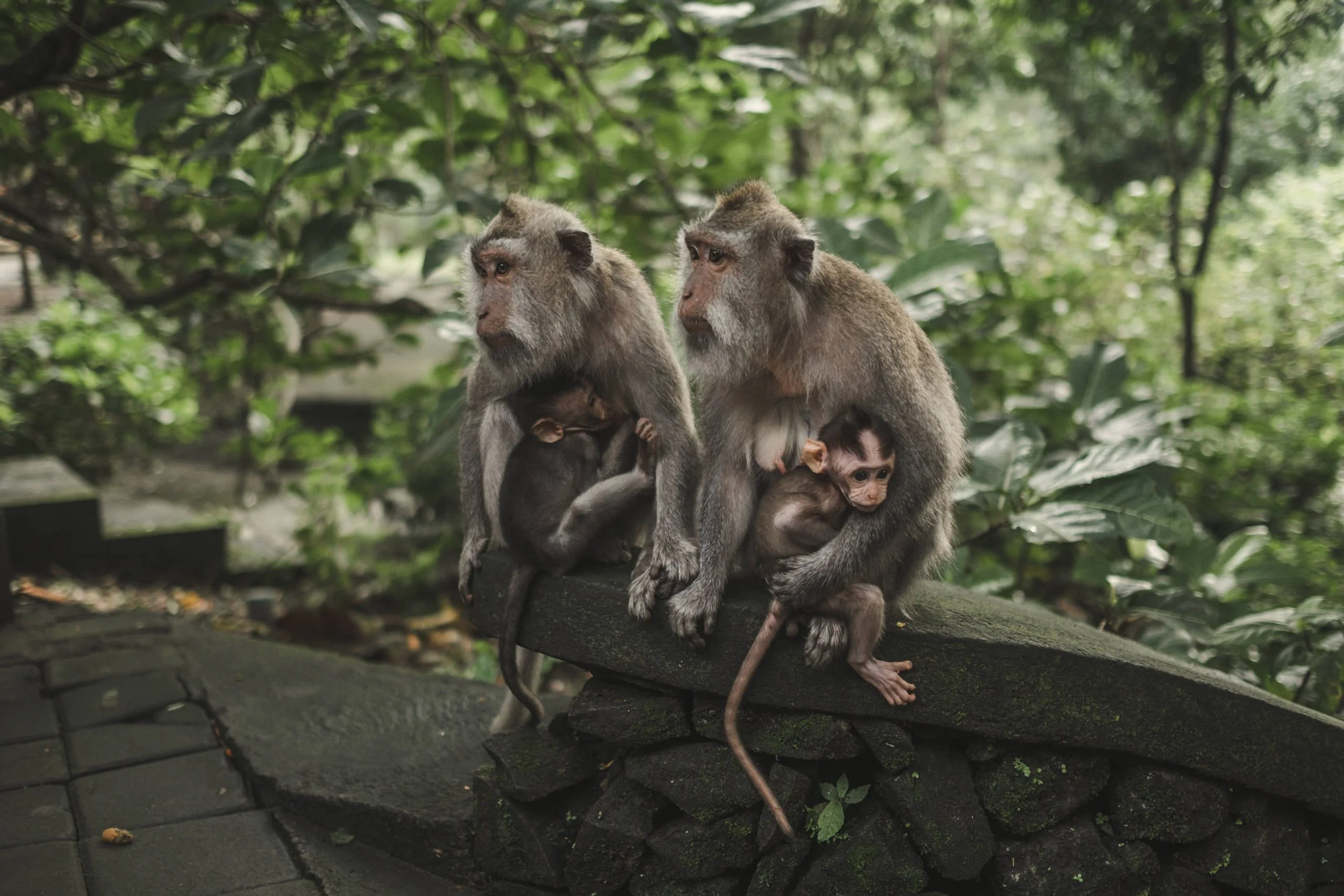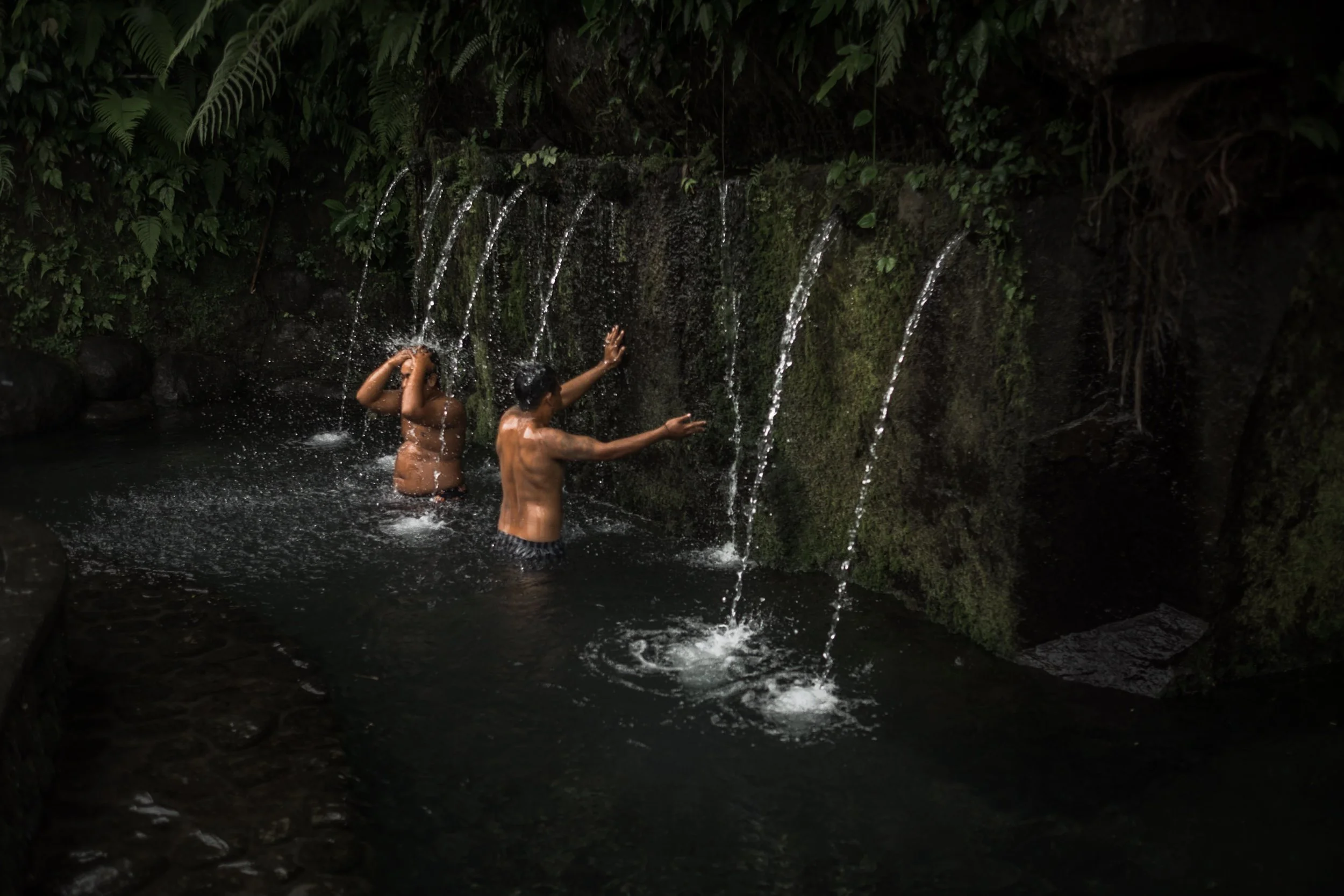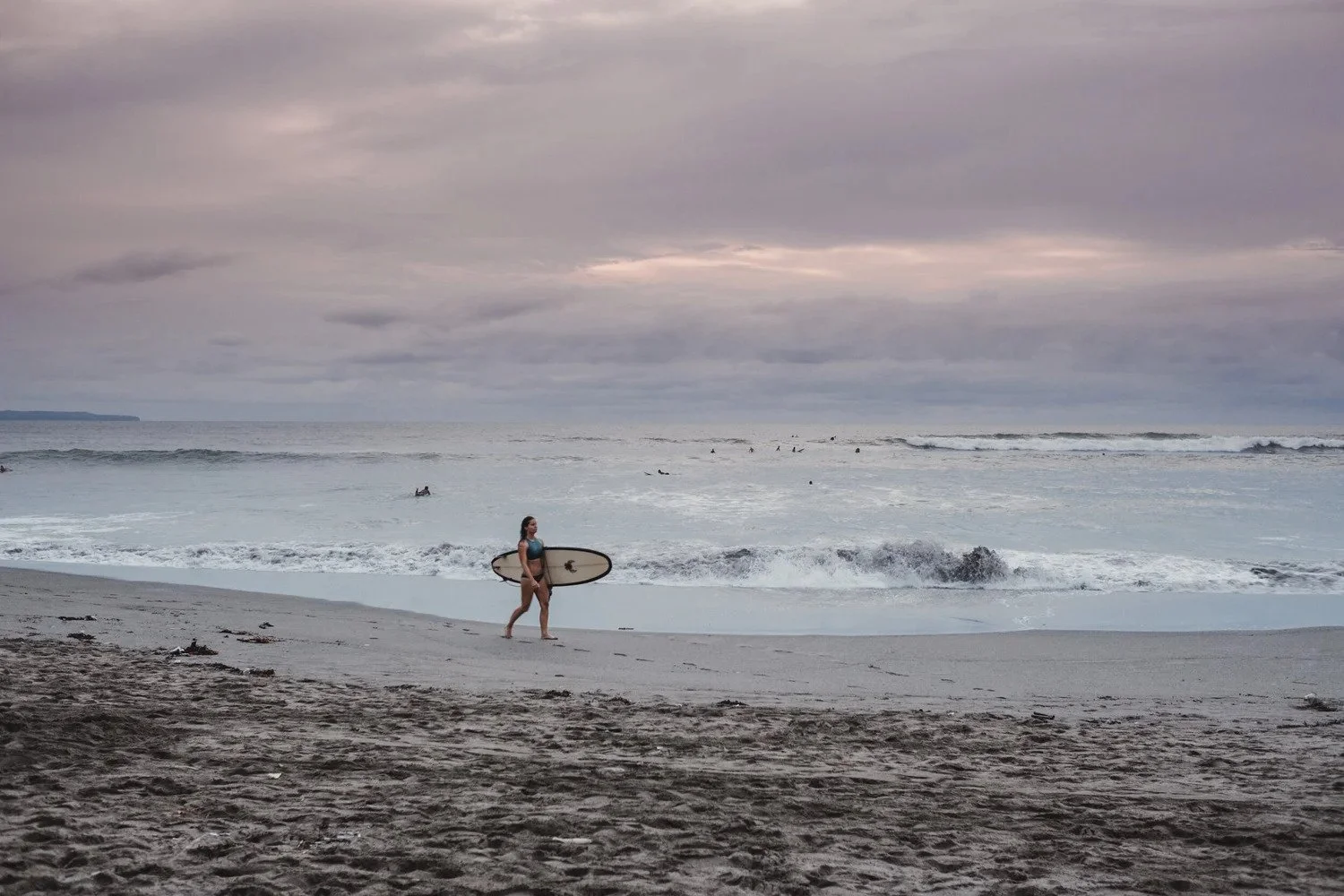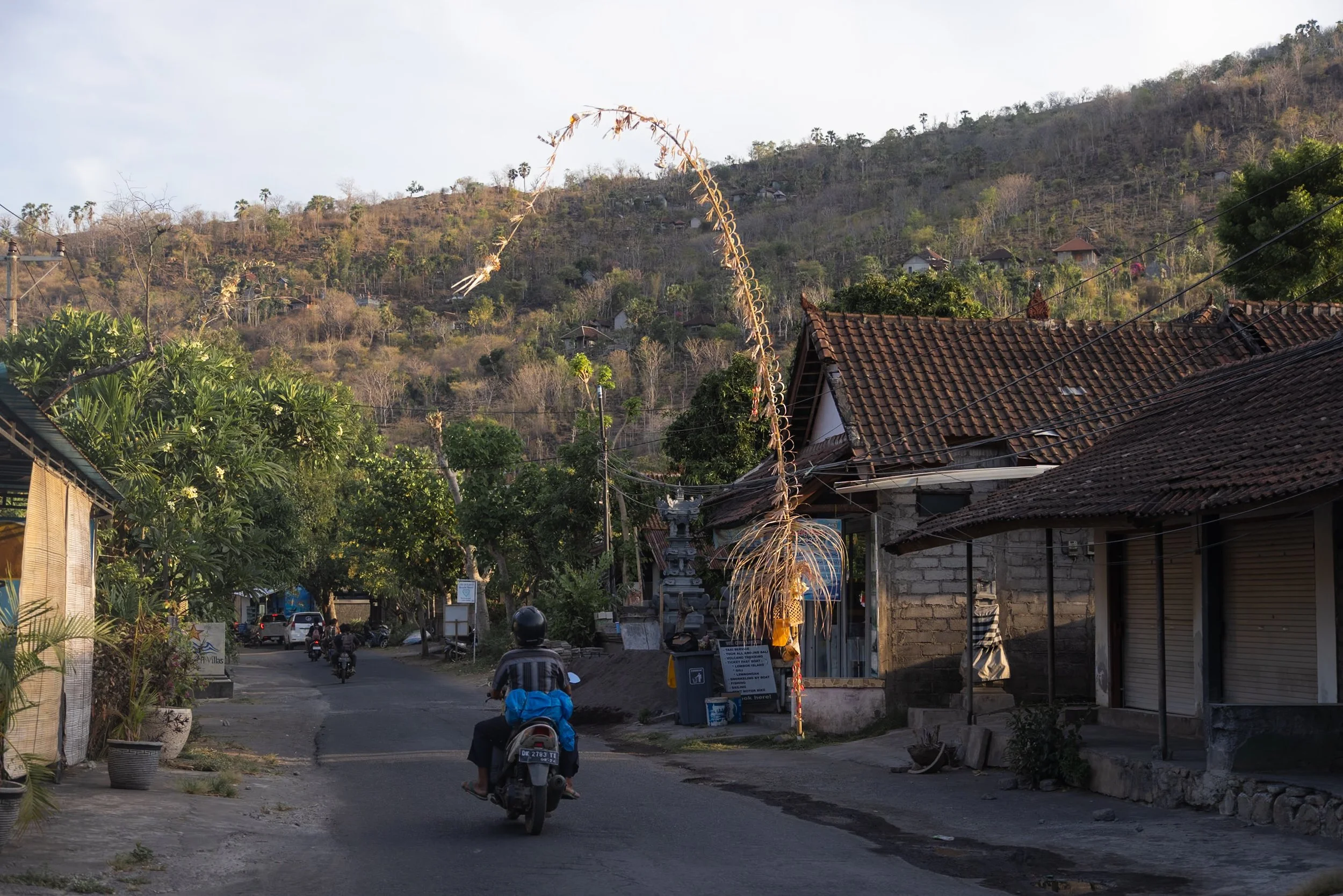This post may contain affiliate links, which means if you purchase through these links, we may receive a small commission at no cost to you. Thank you for supporting our website.
February is part of Bali’s wet season, and the island feels very different from the dry season. The landscapes are lush and green, waterfalls are at their most dramatic, tourist numbers are lower, and accommodation prices are often more affordable.
Rain is more frequent, but it usually comes in short, intense tropical downpours rather than lasting all day, leaving plenty of time to explore temples, waterfalls, rice terraces, spas, and cafés. For travellers seeking culture, wellness, nature, or a peaceful escape, February is an ideal time to visit.
This guide covers everything you need to know about Bali in February, including the weather, where to stay, top activities, packing tips, and insider advice to help you make the most of your trip.
How to Use This Guide
Use the contents table above to jump straight to the sections you need. Whether you’re planning a relaxing wellness getaway, a cultural trip, or a short surf escape, this guide will help you plan a February visit to Bali with confidence. We cover everything from weather and crowds to insider tips and rainy-day alternatives.
What Is Bali Like in February
February is one of the quieter months in Bali, following a busy holiday period in December. The island is calm, with fewer tourists at popular attractions, and many luxury hotels and villas offering lower rates. The landscapes are at their most vibrant, rice terraces are full, and waterfalls are in peak flow thanks to the wet season rains.
Days in February are warm and humid, with tropical showers often sweeping across the island. Rain rarely lasts all day, and the sun still breaks through between showers. The mix of cloud, rain, and sunshine creates dramatic skies. With the reduced crowds, you can enjoy temples, rice terraces, and waterfalls more peacefully than in high season.
The slower pace of the island in February also makes it ideal for wellness and self-care. Spend a morning exploring Ubud’s jungle paths and a rainy afternoon enjoying a spa or yoga class. Cultural sites feel more intimate, and local experiences like cooking classes, traditional ceremonies, and markets are more accessible without large tourist groups.
Bali Weather in February
February remains warm and humid, with temperatures ranging from 26–29°C. The month is part of Bali’s wet season, so you can expect around 18–22 rainy days, often in the form of heavy afternoon or evening tropical thunderstorms. Mornings are generally more reliable for outdoor activities, while downpours can be used as a chance to relax or enjoy indoor spa experiences.
Sea temperatures remain warm and swimmable, around 27–28°C, making swimming, snorkeling, and diving possible almost anywhere on the island. The increased rainfall brings waterfalls to full flow and makes rice terraces vividly green, offering some of the most dramatic landscapes on the island.
Where to Stay in February
With the wet season, choosing your accommodation wisely can enhance your trip. Look for areas that offer activities indoors or nearby, including cafés, yoga studios, wellness retreats, and cultural experiences. Remote beach areas may feel less appealing if rain limits your outdoor plans.
Ubud
Known for its rice terraces, jungle walks, temples, art galleries, and wellness retreats. Even on rainy days, Ubud offers plenty to explore indoors with cafes, workshops, and spa experiences.
Seminyak
Great for dining, boutique shopping, and stylish beach clubs. Ideal if you want city vibes with quick access to indoor entertainment during showers.
Sanur
Offers calmer seas and a quiet coastal atmosphere, perfect for a relaxed stay and morning walks along the beach.
Amed
Ideal for snorkeling, diving, and exploring eastern Bali. The wet season is less likely to impact visibility here than the south coast.
Uluwatu
Famous for cliffside sunsets, luxury resorts, and surf breaks. Even during rainy periods, Uluwatu’s dramatic landscapes remain stunning.
Canggu
A trendy surf town with cafés, yoga studios, markets, and lively nightlife, offering plenty of indoor options during February’s showers.
Use our interactive map below to find your perfect Bali getaway.
Best Things to Do in Bali in February
Even with rain, Bali offers a wide variety of activities. February is ideal for exploring culture, wellness, and nature without the crowds.
Explore Ubud’s Culture and Rice Terraces
Wander through jungle paths and terraces, visit traditional markets, and spend time at temples like Tirta Empul. Even on rainy afternoons, Ubud has cozy cafés and wellness spaces to relax.
Chase Waterfalls in Northern Bali
February’s rains make waterfalls like Sekumpul, Gitgit, and Aling-Aling spectacular. Short hikes are often rewarded with impressive views and fewer tourists.
Visit Temples with Fewer Visitors
Temples such as Tanah Lot, Ulun Danu Beratan, and Uluwatu are quieter. Experience Balinese spiritual life without summer crowds.
Cooking Classes and Cultural Workshops
Rainy afternoons are perfect for indoor activities like Balinese cooking classes, batik workshops, or traditional dance performances. It’s an immersive way to understand local culture.
Relax at Spas and Wellness Retreats
With frequent showers, spa days and yoga sessions feel indulgent. Many retreats in Ubud, Seminyak, and Canggu offer packages that make rainy afternoons serene and restorative.
Surfing and Water Sports
Surfing shifts to the east coast during the wet season, with beaches like Nusa Dua, Keramas, and Sanur providing cleaner, more consistent waves. Diving is also good in Amed and the northeast coast.
Surfing in Bali in February
The wet-season surf shifts the best conditions to Bali’s east coast. East coast beaches like Nusa Dua, Keramas, and Sanur offer offshore or cross-shore winds, creating cleaner and more consistent waves suitable for all levels. West coast spots like Canggu and Uluwatu are often affected by onshore winds, making waves choppier.
Surf schools remain open throughout February but may adjust lessons for passing storms. Beginners will find gentle sections ideal for learning, while experienced surfers can enjoy reef breaks at Keramas and Nusa Dua.
What to Pack for Bali in February
Packing for February requires preparation for humidity, rain, and warm temperatures.
Clothing:
Lightweight, breathable fabrics
Quick-dry tops and trousers
Swimwear for warm sea conditions
Rain jacket or poncho
Footwear:
Comfortable walking shoes for slippery trails
Flip-flops for beaches and casual wear
Accessories:
Mosquito repellent
Sun cream for intermittent sunny days
Dry bag for valuables during sudden showers
Travel umbrella (optional but useful)
Other Essentials:
Reusable water bottle
Waterproof phone case for waterfalls or beach trips
Small backpack for day trips
Is February a Good Time to Visit Bali?
With preparation, February can be a magical time to explore Bali’s culture, wellness, and natural beauty without the summer crowds. The occasional rain showers add charm, intensifying waterfalls, green rice fields, and the island’s mystical atmosphere.
Frequently Asked Questions
Will it rain every day in February?
Not usually. Expect intermittent heavy showers, mostly in the afternoon or evening. Mornings are often dry.
Is February cheaper than January?
Yes. After the December peak, accommodation and flights tend to be more affordable.
Can I swim or surf?
Absolutely. The sea remains warm, and east coast surf conditions are reliable during February.
Are mosquitoes a problem?
They can be, especially in rural areas and after rain. Bring repellent and long sleeves for evenings.
Should I worry about flooding or travel disruptions?
Flooding is uncommon for tourists, but some rural roads may become slippery or muddy after heavy rainfall. Exercise caution on motorbikes or when hiking.
Plan your Bali & Lombok adventures with our guides
Ultimate Amed Guide | Best Snorkelling Spot in East Bali
Bali Travel Guide | Complete First-Timers Guide with Map
Lombok Travel Guide | Everything You Need to Know
The Secret Gilis in Lombok | Gili Asahan Island Guide
Surf and Stay at Boni Beach Hotel Lombok
Best Time to Visit Bali | Weather & Seasons Month by Month
Bali in December | Weather, Festive Events & Best Places to Visit
Lombok vs Bali | Which Indonesian Island Should You Visit?
Bali to Lombok Ferry Guide | Routes, Prices & Travel Tips
Where to Stay in Lombok | Best Areas and Hotels for Every Traveller







